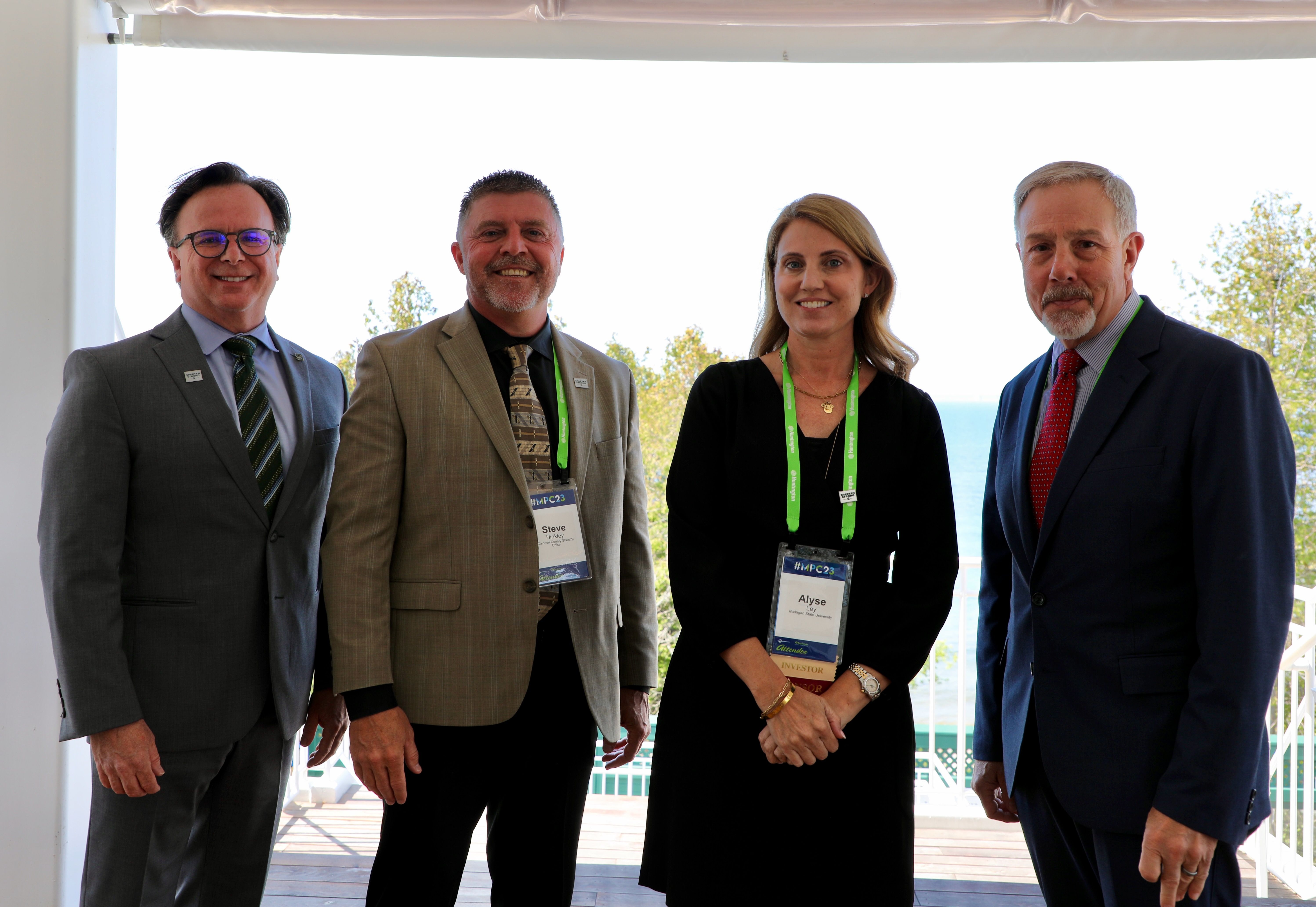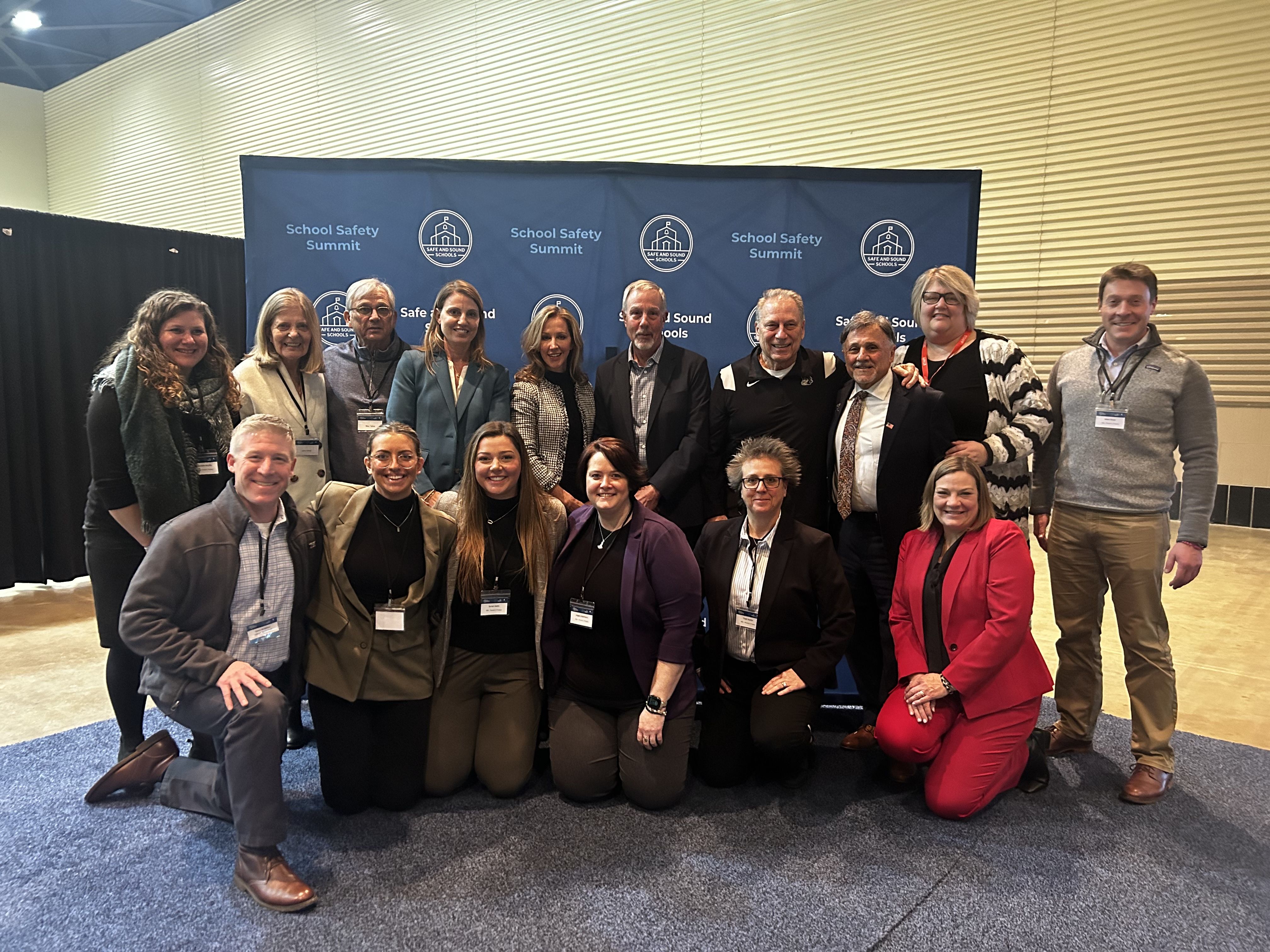Prevent 2 Protect: Preventing Adolescent Acts of Violence Through Community Collaboration
- Alyse Folino Ley, D.O.
- Associate Professor, Department of Psychiatry
- College of Osteopathic Medicine
Project Overview
- Prevent 2 Protect is a pilot project aimed at utilizing the expertise of professionals across disciplines to support middle and high schools in communities where adolescents have been identified as high risk for implementing targeted acts of violence.
- Intensive Support Teams in participating regions throughout the state implement the plan by providing comprehensive support to individuals and their families.
Products/Outcomes
- The project aims to change the trajectory of students who are considered high risk for completing targeted acts of violence.
- The pilot may serve as a model for best practices to support regions throughout the state and nation.
Partners
- Safe and Sound Schools
- West Shore Educational Service District
- Calhoun Intermediate School District
- Harvard T.H. Chan School of Public Health
Form(s) of Engagement
- Community-Engaged Service
- Community-Engaged Research

Alyse Ley, D.O., director of Prevent 2 Protect, and Frank Straub, of Safe and Sound Schools, participated in a panel discussion moderated by Norm Beauchamp Jr., M.D., executive vice president for MSU Health Sciences, at the 2023 Mackinac Policy Conference. L to R: Beauchamp, Steve Hinkley of the Calhoun County Sheriff’s Office, Ley, and Straub.
In 2018, Aaron Stark stood on stage in Boulder, Colorado, and began his Ted Talk by uttering the words, “I was almost a school shooter.” Stark, a high school student in 1996, admitted through tear-streaked eyes and a quivering voice that in a moment of pain and anger, he almost committed a terrible atrocity.
The National Center for Education Statistics (NCES) released a reportExternal link - opens in new window documenting 93 school shootings with casualties at public and private schools across the United States in 2020-21, and those numbers have only continued to increase.
But what if there was a way to prevent these incidents from ever taking place long before students reached the heightened level of pain and anger that Aaron Stark did nearly 30 years ago?
An interdisciplinary team led by Alyse Folino Ley, associate professor in the Department of Psychiatry, College of Osteopathic Medicine, is working to address just that.
Funded by a $15 million grant from the Michigan Department of Education (MDE), MSU is partnering with Safe and Sound Schools on Prevent 2 Protect: The Adolescent Targeted Violence Prevention Project (P2P). The pilot project aims to utilize the expertise of professionals across disciplines to support schools in communities where individuals in middle and high school settings have been identified as high risk for implementing targeted acts of violence.
“We believe individuals who have threatened acts of targeted violence often lack a sense of community, companionship, competency, and connection,” Ley said. “These adolescents are looking for a place to belong, and sometimes they find that through the pathway to violence or groups that promote violence. It’s our goal to change their trajectory.”
Safe and Sound Schools is a Connecticut-based national nonprofit that evolved from the mass shooting at Sandy Hook Elementary School in 2012. Parents of students who perished founded the organization to be a resource center for safety advocacy efforts and provide research-based tools and support for crisis prevention, response, and recovery.
Frank Straub, senior director of violence prevention research and programs with Safe and Sound Schools, says the partnership with MSU will thoroughly address the prevention of adolescent involvement in targeted school attacks.
“The collaboration between Safe and Sound Schools and Michigan State University exemplifies the strength of a multidisciplinary approach to targeted violence prevention that is grounded in research and science,” Straub said. “Utilizing a team of subject matter experts, we’re able to provide consultations, evidence-based interventions, and education to inform targeted violence prevention policies and practices.”
Connecting in a hub located within MSU’s Department of Psychiatry, experts in psychology, psychiatry, and criminology, as well as resident physicians, allied health professionals, law enforcement, Secret Service, educators, and targeted violence prevention experts discuss the individual needs of high-risk students and the eventual reliance on community involvement.
Ley emphasized the importance of bringing community-based resources together, saying, “Everyone we’re working with has a piece of the puzzle, but because all of these pieces haven’t typically worked together on a daily basis, no one has the entirety of the puzzle figured out. It’s our goal to ensure that we have all pieces working together to best help a child and their family.”
In addition to the hub team, P2P established a 12-person advisory board to offer guidance based on their expertise. The board’s collective knowledge ranges from mental health and trauma science to law and criminal justice.
So, How Does It Work?

Members of the multidisciplinary Prevent 2 Protect team pause for a photo during the 2024 Midwest School Safety Summit held in Lansing earlier this year.
Over the past several years, the importance of threat assessment in the school setting has gained recognition throughout the United States as vital to the recognition and prevention of acts of targeted violence. The Michigan State Police (MSP) Office of School Safety has led an initiative to train and implement behavioral threat assessment teams in schools throughout the state. At a minimum, these teams consist of a school administrator, a school resource officer, and a behavioral health provider who are educated on how best to identify, engage, and work collaboratively with families and students to mitigate factors that may contribute to thoughts of violence.
Michigan’s West Shore Educational Service District (ESD) was identified as one of the first regions for the pilot of P2P because a trained behavioral threat assessment team had already been established in the community.
Amanda Unger, assistant director of special education for West Shore ESD, is one of five behavioral threat assessment trainers there.
“The important piece about recognizing threats in schools involves creating awareness for all school staff to know what to do when they see something concerning,” Unger said.
She noted that concerning behaviors can look and present differently in various situations, but some of the most alarming information does not necessarily come from the student directly. “We often hear about and uncover unusual behaviors that are cause for concern through interviews with students and scans of public social media accounts,” she said.
When teams like Unger’s identify a student as high-risk, they may elect to make a referral to P2P.
If P2P determines the student would be eligible to participate, the behavioral threat assessment team meets with the student’s family and provides an overview of the project.
To be eligible for P2P, a student must be between 10-24 and enrolled or recently enrolled in middle or high school. As the program is voluntary, parents have to agree to participate in P2P, as well as agree to take part in a holistic multidisciplinary assessment.
“Parents have been overjoyed that this is a possibility for their children,” Ley said. “We’ve found that parents have already tried to get help but were not successful.”
After voluntary consent is obtained, the intake process begins, and extensive information is gathered to be used in the assessment and construction of an individualized care plan.
The next step involves the student and their family coming to MSU for a full day of assessments. Ley provides a psychiatric assessment, and Angie Matthews, lead case manager for P2P, completes a needs assessment.
“From a holistic perspective I’m not just identifying what the adolescent needs, although that is a key piece of the individualized plan. I’m also assessing all the systems—family unit, clubs, sports, youth groups, etc.—the adolescent is involved in,”Matthews said.
After assessments have been completed, members of the hub team meet and discuss the assessment, individual and family needs, criminogenic risk factors, safety measures, and community resources needed. Together, they create an individualized care plan to encourage the individual and best assist them in being successful. The family is then assigned to a regional Intensive Support Team (IST), made up of a mentor and case manager, to implement the plan. The regional case manager is responsible for systems navigation, and the mentor is paired up with the adolescent to provide guidance, monitoring, and encouragement.
“The individualized care plans incorporate all of our considerations, which can include things from dentistry and psychiatric care to sports and performing arts involvement,” Ley said. “Once the plan is finalized, the IST takes it back to the participant’s community and works with the adolescent, their family, school, community entities, and service providers to implement the plan.”
Once an individualized care plan is in place, Ley and the hub team check in daily with the IST to discuss every participant and ensure the team is helping the adolescent meet their goals.
In addition to daily conversations, Matthews and the P2P team visit the regional areas to foster relationships with community service providers, identify resources, and advocate for the needs of the family. “People can get frustrated and overwhelmed not knowing where to start or who to contact to get the services they need. Through this program, families have an advocate,” she said.
What’s Next?
P2P is entering the second year of its five-year funding by the MDE. Part of the allocation requires five communities to be selected as pilot regions for the project. In addition to West Shore ESD, Calhoun Intermediate School District (ISD) has also been identified, with the remaining three regions being determined in 2024.
As P2P is the first prevention project of its kind in the country, Ley and the hub team spent the first year establishing policies, procedures, and practices, and by late October 2023, they began receiving referrals.
To date, 27 people have been referred to the program from West Shore ESD and Calhoun ISD. Twelve participants have been interested and deemed eligible and seven are now participating in P2P.
Researchers from Harvard’s T.H. Chan School of Public Health are actively evaluating P2P to determine best practices and scalability to potentially serve as a model for the state of Michigan, and eventually the nation.
“If we have a chance to help high-risk individuals, this is it,” Ley said. “The earlier we intervene, the better our chances to really change their path. We can’t make decisions for anyone but can offer adolescents the support, skills, and the tools they need to help make good decisions and to contribute to their communities in positive ways. We’re protecting all of our children by putting our arms around one.”
- Written by Emily Springer, University Outreach and Engagement
- Photographs courtesy of Danielle Murphy, Project Manager, Prevent 2 Protect